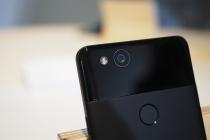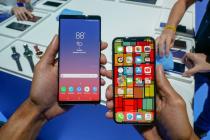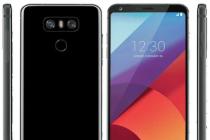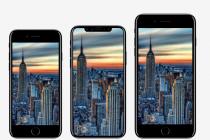This means Samsung marketers don't eat their bread for nothing. What have smartphone makers been up to in recent years? They methodically widened the diaphragm to get more light onto the phone's microscopic sensor. They came to understand that high resolution (16-21 megapixels) with small pixels (0.9-1.1 microns) performs worse than medium resolution (12-13 megapixels) with larger pixels (1.25-1.4 microns) - at 12-13 megapixels, the detail is preserved, but the enlarged pixels collect more light. Also, almost all companies have successfully mastered the optical stabilization system, which, in particular, made it possible to set a longer shutter speed so that the matrix had time to capture more light. That is, the companies did everything to ensure that the tiny sensor received as much light as possible.
The advanced photo flagships of 2017 have an aperture of f / 1.6 (LG V30, Huawei Mate 10), f / 1.7 (Samsung Galaxy S8, HTC U11), f / 1.8 (iPhone X, Pixel 2). According to the latest rumors, the Galaxy S9 will have a mechanically adjustable aperture with f / 1.5 and f / 2.4. Despite the assumptions, it will not be possible to set intermediate values, that is, the user will have two modes at his disposal - for day and for night. A similar solution is used in the Samsung W2018 clamshell, which is sold exclusively in China. Watch the gif:
The fact that smartphone cameras are evolving is certainly encouraging. And I'm glad that Samsung, whose Galaxy flagships are easily among the Top 3 best smartphones for photography, video shooting, has taken the lead (or is trying to do so). However, the joy of the expected jump in photo quality, it seems to me, is premature. Firstly, there is not so much difference between f / 1.5 and the current f / 1.7 for the same Galaxy Note 8, given the size of the camera module. And where are the enthusiastic cheers for the LG V30 f / 1.6 camera? They are not there, because the aperture did not radically change the quality of the photo in comparison with the same G6 (f / 1.8). Secondly, I see very few scenarios where f / 2.4 will perform better than f / 1.5. Nightclubs, home, macro, night landscapes, portraits, shooting moving objects and dynamic scenes? For all of these scenes, f / 1.5 is preferable, that is, the rule applies "the more light (slower shutter speed, lower ISO), the better."

If you have an iPhone X on hand, you can do a little test - shoot something indoors (or even outdoors) with different cameras (shirik and telephoto), trying to build the same focal length. You'd be surprised how much more noisy f / 2.4 photos are compared to f / 1.8, even in good light.















